You’re struggling up the stairs for the third time today. Feeling winded, you finally reach your front door and vow — for the millionth time — that you’re going to start doing cardio.
Sound familiar?
Don’t worry, I’m not judging you. I’ve been known to make that same vow in my time. The good news is, neither one of us has to be stuck this way forever. So let’s dig into how we can boost our cardio fitness and never dread those stairs again.
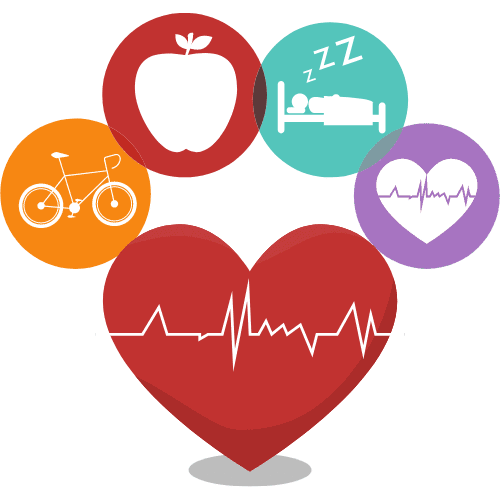
What Does Training For Cardio Really Mean?
So, you’ve decided you’re going to “train for cardio.” What on Earth does that mean? Where do you start? Let’s begin with some definitions.
Cardio
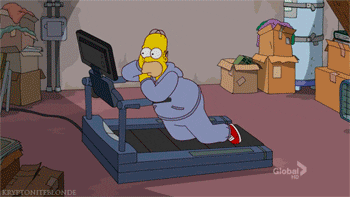
Cardio is short for “cardiovascular.” Cardiovascular refers to your heart and blood vessels.
Basically, it’s how efficient your heart is at pumping blood throughout your body.
But how does that connect to your lungs? Why does having “poor cardiovascular health” mean you get out of breath when climbing those pesky stairs?
Your heart has two sides: right and left. The right side receives used, oxygen-poor blood from your veins and pumps it into your lungs. In your lungs, it gets more oxygen (and ditches carbon dioxide) when you breathe.
The left side of your heart receives this fresh, oxygen-rich blood from your lungs and pumps it into the rest of your body via your arteries. After it moves through your body, it returns to the right side of your heart, and the process begins again.
So when your cardiovascular health is poor, your heart is less efficient at pumping your blood through your body. That means your lungs have to work harder to replenish the oxygen, so you need to take more in, so you get short of breath.
TL;DR: Improving your cardio means helping your heart pump blood more efficiently.
Types of Cardio
There are different types of cardio training.
- Aerobic: “with oxygen.” This is endurance-type exercise that increases your heart rate/breathing over a long period of time. As a result, your muscles have the stored oxygen content necessary to keep up this activity for a while.
- Anaerobic: “without oxygen.” These are shorter bursts of more intense activity when your muscles don’t have enough oxygen to maintain the activity for long.
Aerobic activities include things like walking, running, swimming, cycling, or tennis. Anaerobic activities include things like heavy weight lifting, high-intensity interval training (HIIT), or calisthenics.
Which is better when training for cardio? Honestly, they both deserve a place in your routine. We’ll dig into how to set that up later on.
TL;DR: Include both aerobic and anaerobic training to improve your cardio.
Endurance
“Endurance” is a term that gets thrown around the fitness world and can have various definitions. In general, it requires your cardiovascular system to supply energy to your muscles to support however long you can keep up the physical activity.
Putting it Together
So, “training for cardio” means you’re training with the intention to improve your heart’s ability to pump blood throughout your body. You’re incorporating both aerobic and anaerobic activities to achieve this goal. In addition, you’re working to build your endurance.
TL;DR: Training for cardio means your heart is more efficient, so those stairs won’t be so bad next time.

Why Should I Care?
You mean other than not being miserable every time you come home? That’s enough of a reason for me but if you need more, alrighty then.
1. Eliminate one of the top 5 major risk factors for cardiovascular disease
When you improve your cardio health, you reduce your risk of cardiac disease. That means you’re less likely to have a heart attack, stroke, or need surgery to open your clogged arteries.
2. Lower your blood pressure
Want to take a wild guess at what one of the other major risk factors for cardiovascular disease is? That’s right: high blood pressure. Engaging in regular exercise helps keep your blood pressure low. That means even less chance of all those scary health issues I just mentioned.
3. Manage your weight
If you have any amount of weight to lose or need to maintain your current weight, regular exercise will help with that.
4. Help your pancreas
Your pancreas is responsible for converting the food you eat into energy. Staying active with cardio helps with blood sugar control, decreasing the stress on the pancreas. This means a reduced risk of developing type 2 diabetes.
5. Improve your sex life
I could probably just leave that there, and you’d immediately run off to jump on a treadmill, but I’ll give you the science in case you want it. Physical activity has been shown to help with erectile issues in men and arousal levels in women. So boost not only your physical performance but also your body image and get ready to enjoy better sex.
TL;DR: Lower your risk of major diseases and have better sex. What are you waiting for? Go do some jumping jacks!

Before You Start, Make Sure To…
Set a Specific Goal
It’s all fine and dandy to say, “I’m going to get in shape!” or “I’m going to start doing cardio!” But what does “getting in shape” or “doing cardio” look like? How many workouts per week? What will they be? How will you know when you’ve succeeded?
That’s where setting a specific fitness goal comes in. Countless studies have shown that people are far more likely to achieve their goals if they make them SMART.
What’s a SMART goal? Let’s break it down:
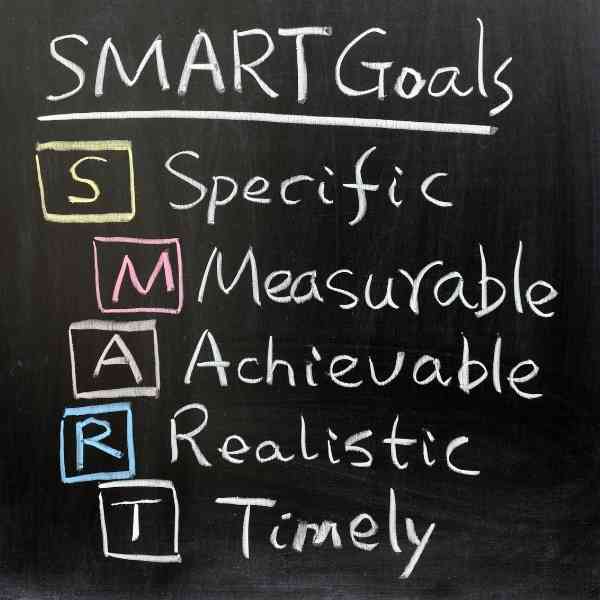
Specific
This is where you drill down into the details of what you’re hoping to achieve. For example, if your goal is to boost your cardio (or else why are you reading this post?), the specific part of your goal could be something like, “I will do three cardio sessions for 30 minutes each per week.”
Measurable
How will you know you’ve succeeded at boosting your cardio? First, pick a measurement, something concrete. For example, track your blood pressure, use a fitness tracker to monitor the quality of your sleep, or heck, even pay attention to your breathing patterns when you go up those dang stairs. (More on monitoring your progress below.)
Attainable
Whatever your goal is, you have to be able to reach it. It should be a stretch, so you stay motivated, but if your brain knows you can’t ever get it, you’ll quickly give up. Keep it attainable.
Realistic
Similar to attainable, but slightly different. Your goal should be realistic and fit well into your schedule. You can’t go from couch potato to Olympic track-and-field competitor in a month. Which brings us to…
Time-Based
Give yourself a deadline. Again, make it realistic but close enough that you’ll feel the pressure to keep up with your goal.
Put it Together
So, how does all this come together? Take the goal in the first section, “I will do three cardio sessions for 30 minutes each per week.” Now, add the rest. If that first goal is attainable for you and realistic for your schedule, your final goal could sound like, “I will do three cardio sessions for 30 minutes each per week for six months, aiming for my blood pressure to be 110/70.”
TL;DR: Set a SMART goal, so you’re more likely to stick with it.
Remember To Warm Up And Cool Down
“Psh, I don’t need to warm up. My body will adapt.” Stop right there. Skipping your warm-up is one of the worst things you can do. Warm-ups are not optional, people. Same with your cool down.
Your warm-up is designed to:
- Gradually increase your body temperature
- Boost blood flow to your muscles
- Prepare your muscles and heart for exercise
- Reduce your risk of injury
Your cool down is designed to:
- Help your body safely transition from exercise back to rest
- Gradually reduce your breathing, heart rate, and body temperature
- Prevent blood from pooling in your extremities, preventing your blood pressure from dropping too rapidly
- Prevent muscle soreness and reduce the risk of injury
A proper warm-up should be dynamic and focus on your large muscle groups. A good cool-down should include tapering off your dynamic movements until you’re doing static stretches.
TL;DR: Don’t skip your warm-up or cool down. Period.
Don’t Forget to Stretch
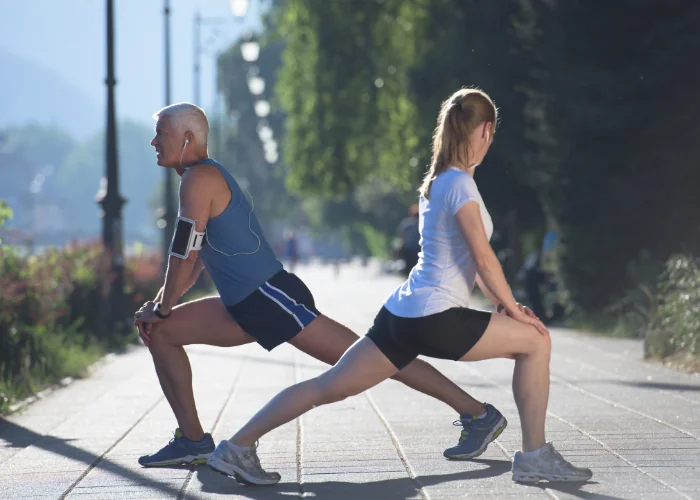
Speaking of stretching, don’t forget to do it! During your warm-up, after your dynamic movements, take just a few minutes to stretch out your muscles. This is particularly important if you’re doing impact exercises like running, jumping jacks, etc.
In your cool down, start with a slow movement in your stretch before holding the static pose. Focus on breathing during the stretch. You should feel a challenge, but it shouldn’t be painful.
Stretching not only helps prevent injury but also improves your athletic performance, promotes circulation, decreases back pain, and can even improve your posture.
TL;DR: Same with your warm-up and cool down, don’t skip your stretches. Period.
Rest
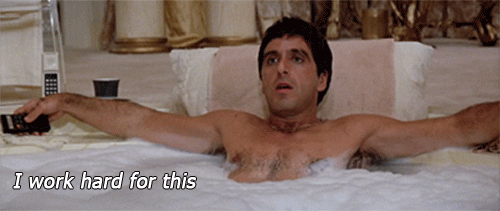
So many people get focused on the workout they forget the actual work gets done when you’re resting. However, there are a few important places to focus on your rest.
Between Exercises
If you’re doing interval-based cardio, the space between your exercises is vital to rest. The entire point of the intervals is to give you a length of time (though it’s usually pretty short) to recuperate enough to tackle the next move. So do yourself and your body a favor and chill out when the timer says so.
Between Workouts for Muscle Groups
This article is focused on cardio, but a well-rounded fitness routine should include strength training, too. When you’ve worked a muscle group — say, leg day — give your muscles a full 48 hours before you work the same ones. Those hours after the work is done are when your body is repairing all those microscopic tears you made when you lifted. Give it the time to do so.
Sleep
I could write an entire article on the importance of quality sleep. However, in the interest of brevity, know sleep is important for your recovery. It’s when your body recharges and rebuilds cells, when you store memories, and it also helps stave off disease. So prioritize quality sleep in your fitness routine.
TL;DR: Prioritize rest between exercises, muscle groups, and get some quality shut-eye.
Find Your Target Heart Rate (THR)
Your heart rate is the same as your pulse, as in, it’s how many times your heart beats in a minute. In the Cardio section above, we covered why helping your heart pump blood more efficiently is important. Now let’s talk about how to find your target heart rate during exercise.
Your THR is the number of beats per minute you should be aiming for during your cardio sessions to maximize your workout.
Start with your maximum heart rate, which is about 220 minus your age. During moderate-intensity workouts, your heart rate should be approximately 50–70% of your maximum. During vigorous activity, it should be about 70–80%.
How Do I Check My THR During a Workout?
Periodically during your sweat session, take a moment to find your pulse. Rest two fingers (not your thumb, we’re not pressing together here) on the inside of your wrist or at the side of your neck. Using a watch or the clock on your phone, count the number of beats you feel in 30 seconds. Multiply that by 2 to find your beats per minute (bpm).
For example, say you’re 35 years old, so your maximum heart rate is 185 bpm. While you’re working out, your THR should be anywhere from 93–157 bpm (that’s the 50–85% from moderate to vigorous).
You can also use a fitness tracker to automatically track your heart rate.
TL;DR: Your heart rate helps ensure you’re working out with maximum efficiency. It’s worthwhile to track it.
Eat Right
Ever heard the phrase, “You can’t out-train a bad diet”? Sorry to break it to you, but it’s not just a meme — it’s true. 80% of the success of your journey from couch potato to fit will be due to your nutrition, not your exercise.
If you’re eating garbage, you can’t start a cardio routine alone and expect the pounds to magically fall off or your cardiovascular health to instantly improve. Your food is — quite literally — fuel for your body.
You wouldn’t put the cheapest available gas into a high-end performance race car, would you? Same principle.
So, how do you “eat right”? Well, we’ve got an entire article on it, but here are a few general guidelines to get you started:
- Prioritize lean protein at every meal. (Think turkey, salmon, etc. Vegetarians and vegans, we’ve got you covered, too.)
- Boost your intake of fresh vegetables and fruits. (Start with one new serving of veggies per dinner for a week and build from there.)
- Swap refined carbs for whole grains (Whole wheat bread, quinoa, brown rice, etc.)
- Reduce your sugar consumption as much as possible. (Fresh fruit doesn’t count here, we’re talking sodas, snack/candy bars, processed foods, etc.)
A SUPER general guideline? Read the ingredients. If you can’t pronounce it, don’t put it in your mouth.
TL;DR: 80% of your results will come from what you eat, so dial in your nutrition.
Last But Not Least: Don’t Worry About Setbacks
If you miss a workout or experience a lull in your motivation, don’t throw in the towel! You’re human, and you’re trying to build a new habit, and that shit is hard. So give yourself a little grace and try again tomorrow.
But that’s the key — you have to try again. If you let your “grace” turn into excuses that turn one missed workout into two weeks of sitting on the sofa, that’s not what I’m talking about.
I’m talking about the inevitable roadblocks you’ll face, like thinking it’ll never get any easier, or you had an unexpected meeting, and you missed gym time, or you forgot about your cousin’s birthday and weren’t planning on eating cake.
Again: you’re human, and life WILL throw you curveballs. The key is to throw ‘em right back.
TL;DR: Setbacks will happen. Experience them, learn from them, and get back up to try again tomorrow.

Your Journey Starts Here
Test Your Current Cardio Level
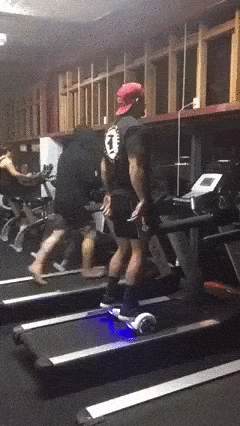
Yes, you should test your current cardio level even if you’re a complete couch potato who hasn’t lifted more than a fork in years. You need a baseline so you can set goals and work effectively to achieve them.
Option 1: Find Your Resting Heart Rate (RHR)
You already know how to take your pulse during a workout. To find your resting heart rate, do the same method but check it while you’re at rest.
A good time is right after you’ve woken up in the morning before you even get out of bed. Movement, medications, coffee, and more can all affect your heart rate, so test it when you wake up.
An average adult’s healthy RHR is between 60–100 beats per minute. A lower resting heart rate generally indicates better health, but don’t panic if yours is closer to 100. Everyone starts somewhere.
Option 2: Your Waist-to-Hips Ratio
With a soft or cloth measuring tape, measure your waist (the narrowest point between the top of your hip bone and the bottom of your ribs) and around your hips (the widest part of your hips, around your butt).
Don’t cheat by sucking in your stomach! No one has to know these answers but you.
If your waist measurement is wider than your hips, it’s generally considered an indication of increased risk of certain diseases like type 2 diabetes and poor cardiovascular health. Women with a waist circumference of 35 inches or more and men with 40 inches or more have an even greater risk.
Again, if you fall into this category, don’t panic: you’re here to learn how to boost your cardio, after all. You’re already taking steps in the right direction!
A Note on BMI
In short: it’s bullshit. Sadly, a lot of the health and fitness industries and communities still look to BMI as the sole indicator of health. The unfortunate truth is it was developed by a man who was not a doctor and had never studied medicine. Furthermore, he never intended the BMI scale to be used on individuals; rather, it was supposed to show statistics on entire populations.
Even worse, his original pool sample was of purely French and Scottish men. So anyone else — women, people of color, literally anyone not a male of Eastern European descent — was not included.
So, if you absolutely must know your BMI, for the love of all that’s holy, use it as a single factor in your health. Also, consider your RHR, waist-to-hip ratio, age, current activity level, your actual body fat percentage, and your blood work (if applicable).
Choose a Workout You ENJOY
The easiest way to stick to a new habit is to pick one you actively like. Not just tolerate, not just heard of in the latest fitness magazine or newsletter, not the one that popular Instagram influencer is touting.
The one you actually actively enjoy.
Don’t know what you like? Try out some of these:
- Walking. The benefits of walking are highly underrated, especially if you’re literally 100% new to exercise. Start with however short you need to — even 10 minutes is better than nothing. Then, gradually work up to at least 30 minutes per day, every day, for best results.
- Running. Only if you like doing it! Running can be an easily accessible way to start your cardio journey. All you need is a good quality pair of shoes and some workout clothes, and you can run right out your door.
- Bike riding. Whether you use an indoor bike or get outside, bicycling is a joint-friendly way to start your fitness routine.
- Aerobics/dance. Your bodyweight is an excellent tool in your arsenal! There are literally hundreds of free aerobics and dance routines on YouTube. With a little research, you can find one you love.
- High-intensity interval training (HIIT). Ahh, the joys of HIIT. You exercise in intervals of work and rest, as the name implies. The exact intervals can vary but are usually somewhere around 20 seconds work/10 seconds rest, 30 seconds work/20 seconds rest, 45 seconds work/25 seconds rest, etc., for however many sets/reps you’d like.
- CrossFit. CrossFit has taken the exercise world by storm. It’s a form of HIIT that focuses on functional movements, usually similar to what you perform in your day-to-day. Depending on the gym you join, the workouts may change daily.
- Tabata. Another form of HIIT, Tabata, features workouts that last for 4 minutes. Don’t let the short duration fool you! These intervals are intense: 20 seconds on, 10 seconds rest, complete 8 sets of each exercise.
There are dozens upon dozens of other types of cardio you can try. Swimming, hiking, rock climbing… with so many options, you’re practically guaranteed to find something you love.
TL;DR: Choosing an activity you enjoy means you’re more likely to stick with it.
How Much Time Do I Need to Put In?
I bet you’re hoping I say the minimal amount required, right? Hate to break it to you, but there is no one-size-fits-all for how hard you have to work to improve your cardio. However, I can give you some guidelines.
How Many Days Per Week
Ideally, your fitness routine includes a nice balance of cardio and strength training. The American Heart Association recommends the following:
- 150 minutes/week of moderate to intense aerobic activity or
- 75 minutes/week of vigorous aerobic activity or
- A combination of both
Couple that with 2 days of moderate- to high-intensity strength training, and you have an excellent recipe for health.
So, that’s a lot of numbers — what does it look like in practice? An example:
- Sunday: rest
- Monday: 40 minutes moderate-intensity cardio
- Tuesday: 30 minutes strength training + 30 minutes moderate-intensity cardio
- Wednesday: 40 minutes high-intensity cardio
- Thursday: rest
- Friday: 40 minutes moderate-intensity cardio
- Saturday: 45 minutes strength training + 25 minutes high-intensity cardio
That’s got your combination of moderate- and high-intensity cardio for a total of 150 minutes per week. Notice how you have two rest days, and you only work out for barely more than an hour on one day? That’s not so bad, right?
TL;DR: Aim for 150 minutes/week, however, you want to split that up, usually 5 days per week.
How Long Should Each Exercise Be?
Well, that depends a little on what you’re doing. If you mean how long should you do cardio vs. strength training, I touched on that a bit above. But you can shift the minutes around however you’d like.
If you mean how long should you literally be running or doing bodyweight work or swimming, that also depends on what you’re doing and your goal. Are you doing steady-state, moderate-intensity cardio? Then you’re probably good to do the entire workout at the same intensity, for somewhere around 30–40 minutes.
If you’re doing HIIT or some other high-intensity cardio, choose your intervals, so you have rest periods. Refer back up to the Types of Cardio section for a HIIT refresher.
TL;DR: How long each exercise should depend on what you’re doing. Sorry, no short answers here.
How Hard Do I Need to Push Myself?

I talked about your heart rate and how to find it above. To remind you:
- Start with your maximum heart rate, which is about 220 minus your age.
- During moderate-intensity workouts, your heart rate should be approximately 50–70% of your maximum.
- During vigorous activity, it should be about 70–80% of your maximum.
Why should you care about this?
If your heart rate is too low during exercise, you’re not pushing yourself hard enough. You may think or feel like you’re working out super hard, but if you check in with your heart rate, it may tell a different story.
On the flip side, if you’re pushing super hard and your heart rate is really high, you’re overdoing it. Your body is too stressed, and it’s unlikely to recover as well as if you work within your THR percentages.
TL;DR: How hard do you need to push? Check your heart rate.
How Can I Monitor My Progress?
Making progress and improving your cardiovascular health is kind of the point of this entire article. So, how do you monitor this? There are a few different ways.
Fitness Trackers
Arguably the easiest way is a fitness tracker. There are dozens upon dozens on the market, so we won’t get into exact brands here. You’ll have to do some digging to figure out which will work with your lifestyle, aesthetic, exercise needs, smartphone (if applicable), etc.
One of the benefits of fitness trackers is you don’t have to stop to take your pulse during a workout — it automatically monitors that for you. Plus, they usually (depending on the model) come with features that track your sleep, caloric intake, weight, body fat percentage, hydration, credit score, how many times you swiped right… just kidding on those last two. The point is, they track a lot of your data.
Your Weight
If your goal with improving your cardio is also to lose weight, that’s a great indicator of your progress. As long as it doesn’t trigger obsessive behavior for you, snag yourself a scale and keep track.
A few tips:
- Don’t weigh yourself every day. Period. You’ll drive yourself nuts. Your weight can change every single day by 5 pounds or more thanks to water weight, what you’ve eaten, your activity level, etc. Never weigh every day.
- Weigh yourself once per week AT MOST.
- Weigh yourself at the same time each day, with the same circumstances. Usually, it’s best to do so first thing in the morning. Just remember, if you weigh yourself after chugging a glass of water or before/after using the toilet, etc., it could change your data point.
Daily Activities
Think: when those stairs going up to your home feel less difficult. Or when you can carry all the groceries into the house in one trip instead of going back multiple times. Or when you can run around with your kid or dog in the yard and not gasp for breath.
Take note of when your daily activities get a little bit easier. That’s progress!
TL;DR: There are many ways to monitor progress — fitness trackers, your weight, and the ease of daily activities are just a few.
How Do I Know It’s Time to Take it Up a Notch?

Basically, when you’re crushing what used to drop you to the floor. Or when your workout starts to feel like a warm-up.
For example, say you start doing 30 minutes of steady-state jogging 3 times per week. At first, by minute 10, you want to throw in the towel and can’t imagine making it through the other 20.
Then, as your cardio health improves, you don’t get that feeling until minute 20. Then suddenly, a while later, you look at your watch, and has it been 30 minutes already??? You didn’t even notice! So now’s the time to take it up a notch.
TL;DR: Increase the intensity of your workout when it gets easy to do what used to crush you.

Wrapping It Up
Going from couch potato to fit all starts with one thing: a decision and a commitment to doing it.
Set your SMART goal, pay attention to your heart rate, and get moving. Those stairs don’t stand a chance.


